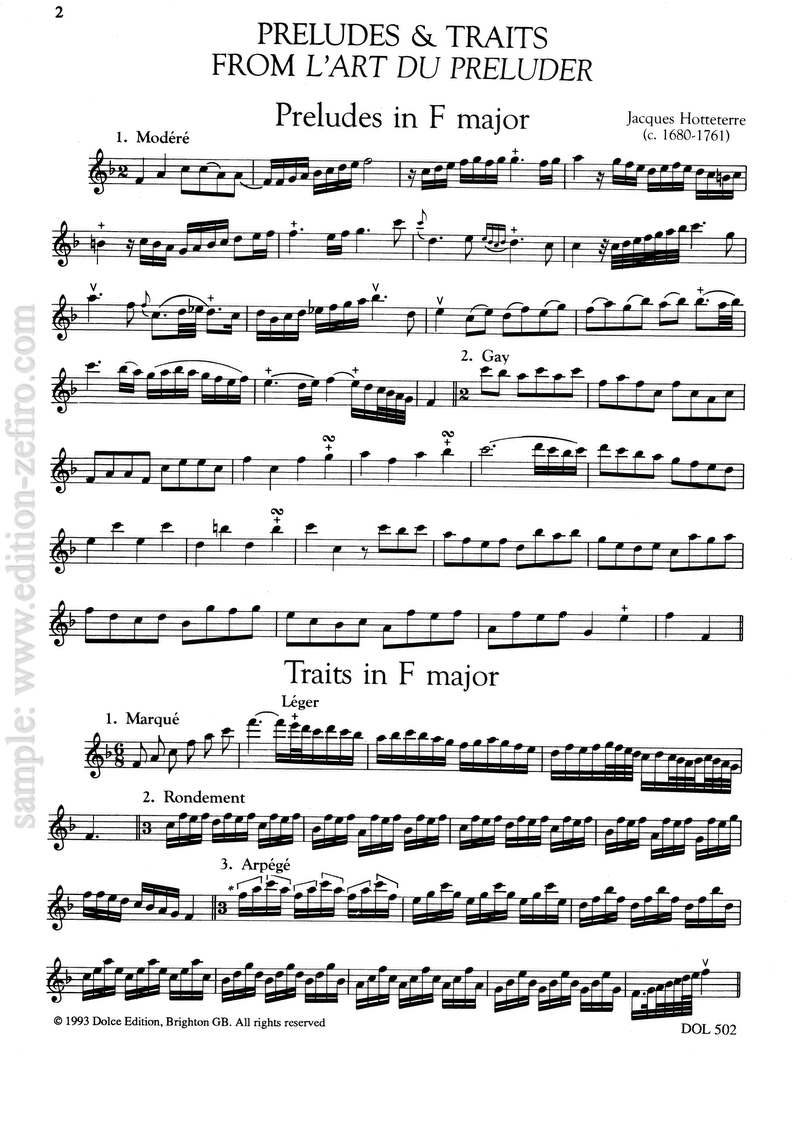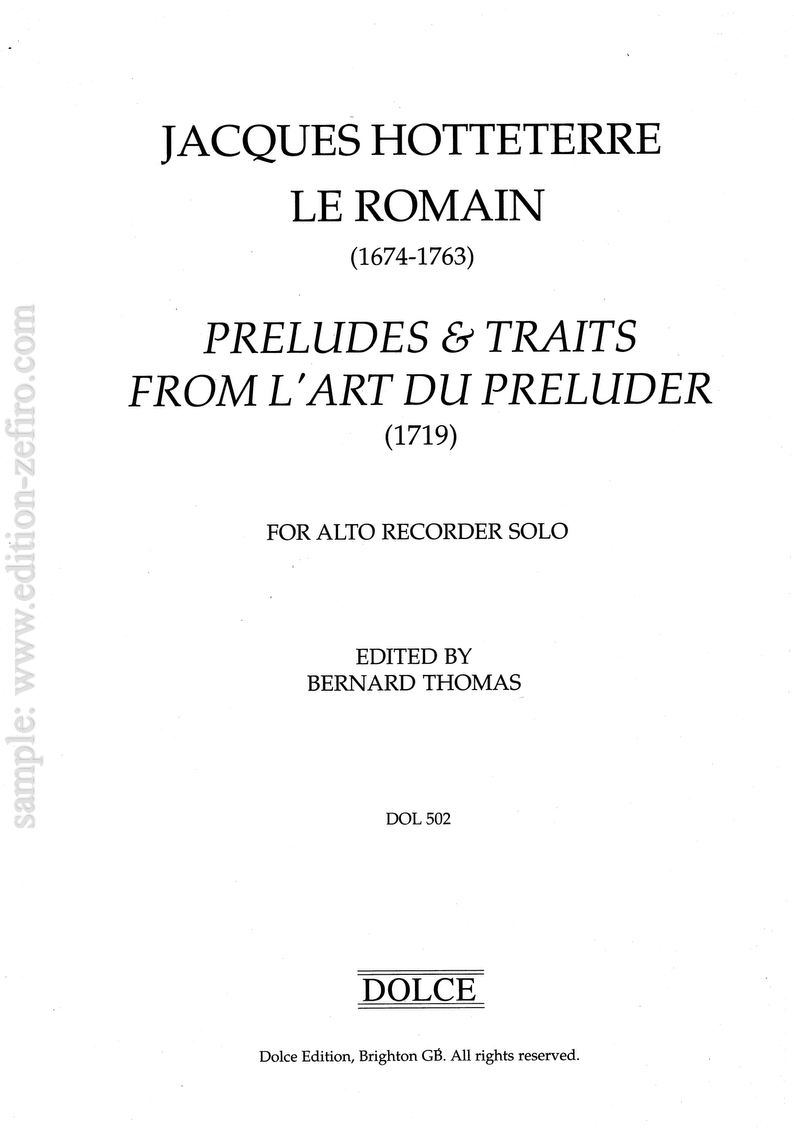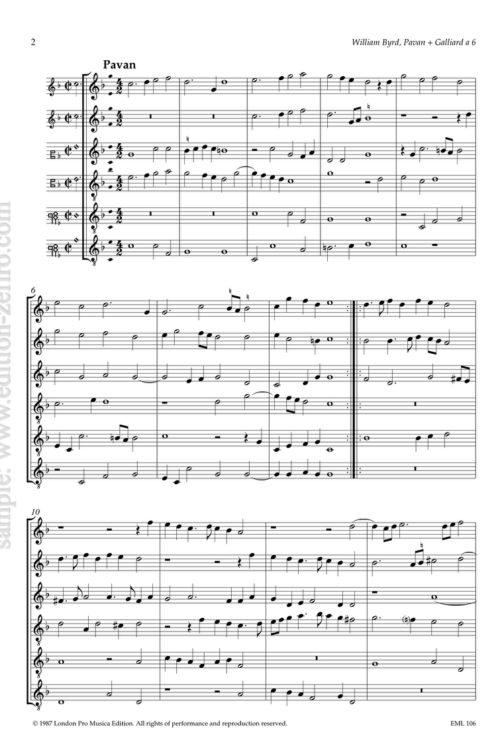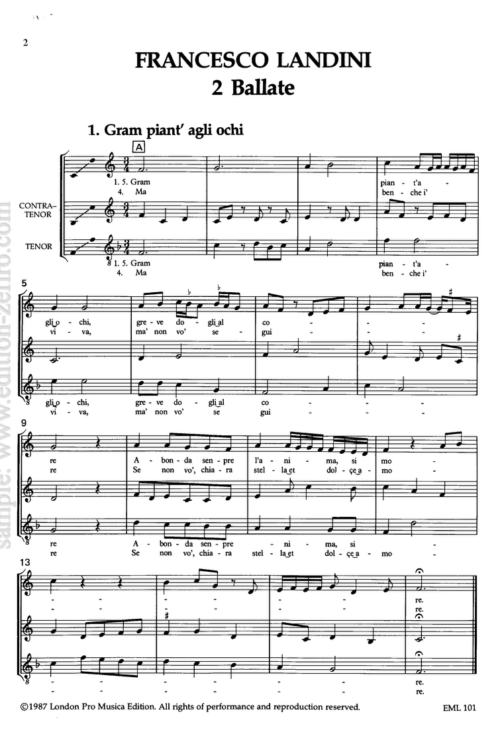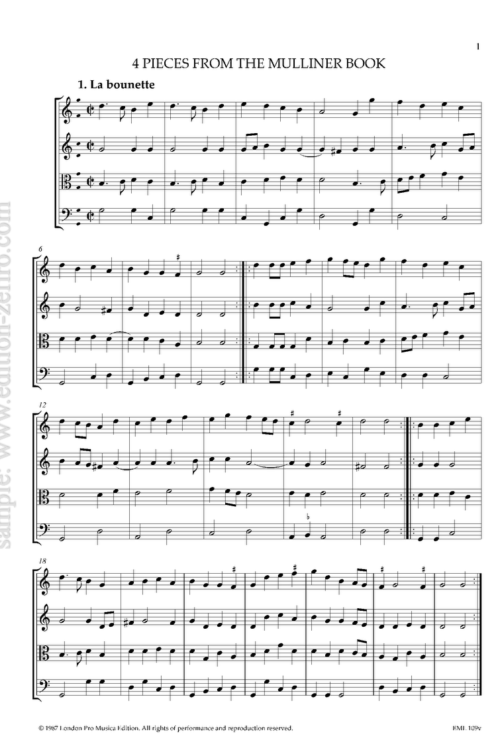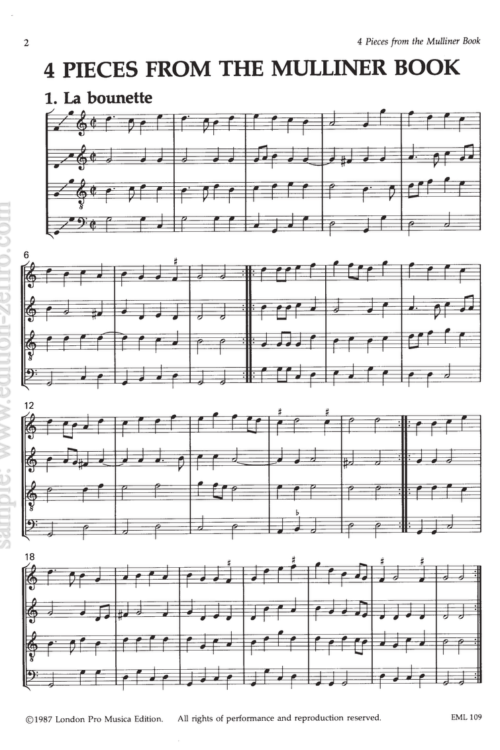For alto recorder solo, this volume contains all the preludes and traits specifically for recorder in Hotteterre’s L’Art du Preluder. They are mostly improvisatory fragments, in a great variety of meters and moods. Ideal study material for baroque style.
Hotteterre’s L’art du Préluder (Paris 1719) consists mainly of sets of preludes and traits in all keys. Chapters 3 and 4 consist of preludes and traits intended primarily for flute; some of these are marked as being playable on the recorder, but actually tend to lie a little too low for comfort, and recorder players are better off turning their attention to the preludes and traits found in chapters 5 and 6, which are specifically for the recorder, and which appear in their entirety here.
I have changed Hotteterre’s order, so that the traits in each key appear immediately after the preludes in the same tonality; also, the keys appear in ascending order with, for example, B flat major and minor before B major and minor. The distinction in Hotteterre’s mind between prelude and trait is a little unclear, but the latter are shorter, and generally consist of a single idea.
A special feature of Hotteterre’s preludes is the use of square brackets to denote pairs of notes that should be tongued tu-ru, with the tu on the beat, rather than the more typical French articulation of tù-tu-rù-tu-rù etc. In his introduction to L’art du Préluder Hotteterre states that there were two kinds of preludes, (a) the short composed piece which may well be the first movement of a sonata or similar work, and (b) the improvised prelude, which he says is “le véritable Prélude” of which the present pieces are examples.
The author makes it clear that he has tried to include as many different styles as possible, to help students improvise their own pieces. Whether or not we approach them in this spirit today, in an age in which composition and performance are unfortunately regarded as separate activities – at least in western “art” music – this material is of great help in getting into style, so crucial in French Baroque music. Having to find just the right tempo, mood, phrasing and articulation for a short fragment is, in a way, more of a challenge than playing pages of virtuosic figuration.
Finally it is hoped that Hotteterre’s delicate and sensitive little examples will provide essential practice material for students of baroque performance.
(Bernard Thomas)


